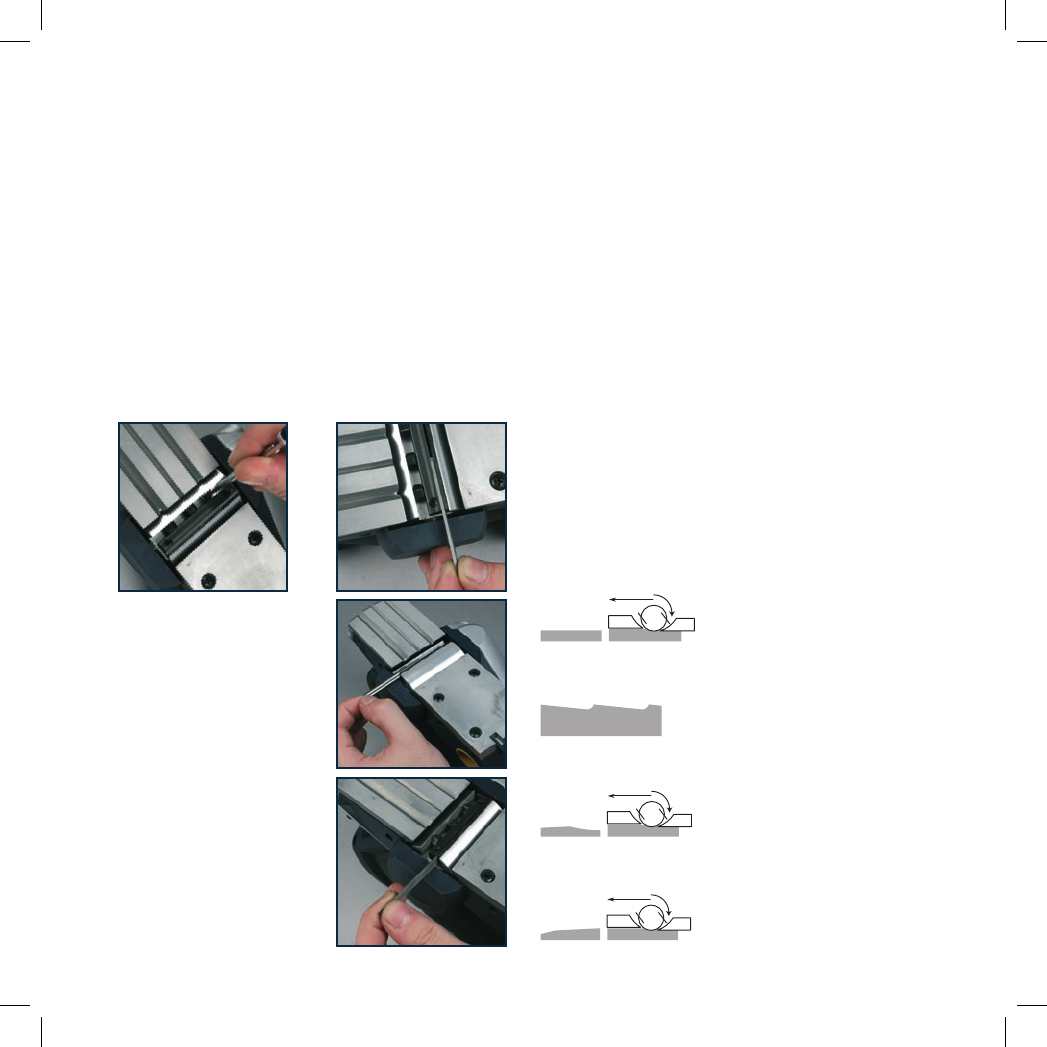8
Setting up
Removing or installing planer blades
CAUTION
. Always ensure that the tool is switched off
and unplugged from the power supply before installing or
removing blades.
Your planer is fitted with reversible blades.
Blades can be reversed when blunt. After both sides of the
blades have been used they should be discarded.
NOTE. These blades cannot be re-sharpened.
Removing a planer blade
1. Using spanner (12), loosen the three clamping screws (8).
2. Slide the planer blade (6) from the slot in the blade barrel
(7) in which it is retained.
Installing a planer blade
1. Either turn over the planer
blade (6) or replace it
if required.
2. Slide the good blade face up
into the blade support
block of the blade barrel (7).
NOTE. The ridge along the blade
should be on the blade face on
the opposite side to the clamping
screws (8).
3. Tighten the clamping screws
(8), ensuring they are
tightened evenly.
4. Repeat for the second blade.
NOTE. Always change both blades at the same time,
otherwise the resulting imbalance can cause vibration and
shorten the blade and tool life.
CAUTION. When installing blades, first clean out all chips
or foreign matter adhering to the blade barrel (7) and the
blades themselves. Use blades of the same dimensions
and weight, or the barrel will oscillate and vibrate causing
poor planing action and possibly a machine breakdown.
Tighten the clamping screws (8) carefully when attaching
the blades to the planer. A loose clamping screw could
be extremely dangerous. Regularly check to see they are
tightened securely.
NOTE. Your planing surface will end up rough and uneven
unless the blades are set properly and securely. The blades
must be mounted so that the cutting edge is absolutely
level, i.e. parallel to the surface of the rear base (10).
The examples below show proper and improper settings:
Correct setting
• Front base (moveable shoe) (9)
• Rear base (stationary shoe) (10)
Clean smooth cut
Nicks in surface
– as caused by the edge of one or all
blades not being parallel to the rear base line.
Gouging at start – as caused by the edge of one or all
blades not protruding enough in relation to the rear base line.
Gouging at end – as caused by the edge of one or all
blades protruding too far in relation to the rear base line.
